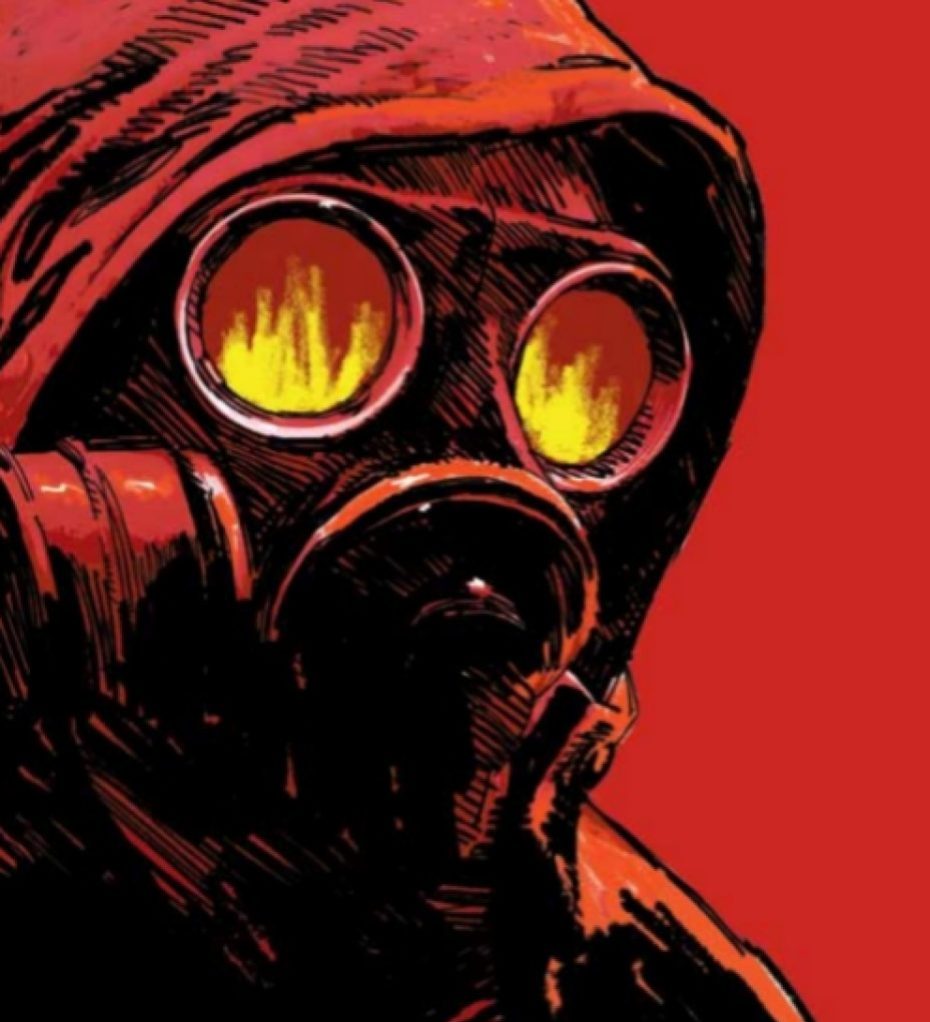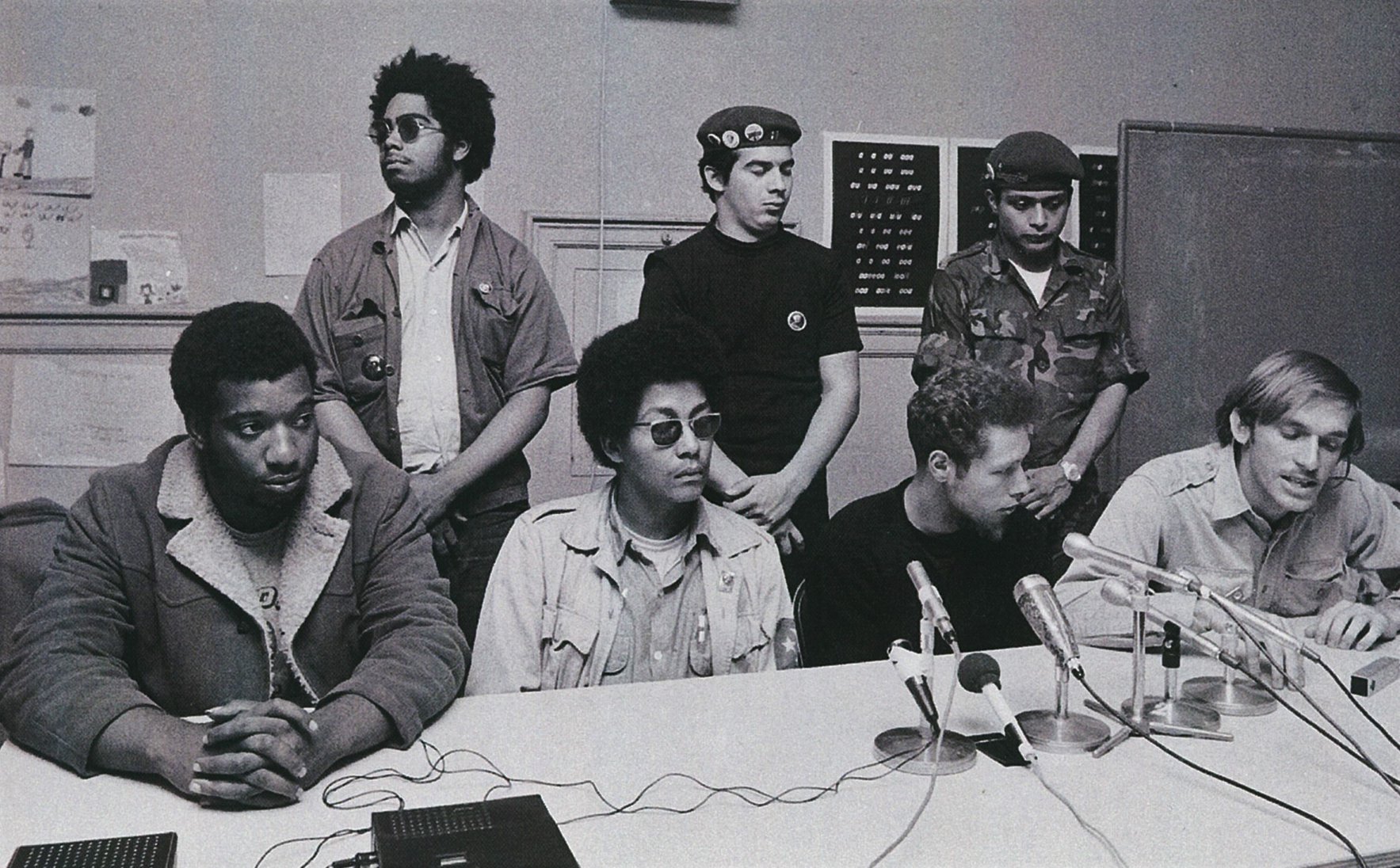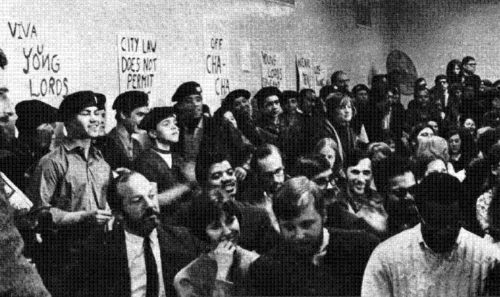More than just a set of free-market policies, neoliberalism has always sought to alter society’s balance of power in favor of bosses. Its assault on democracy and undermining of unions is now playing straight into the hands of the far right.
Neoliberalism has been with us now for more than three-quarters of a century. Since the Mont Pelerin Society’s efforts to reinvent old-fashioned liberalism in the 1940s, neoliberalism has taken various forms, be it the Chicago School and German ordoliberalism, the Pinochet-led Chilean coup of 1973, the Thatcher–Reagan revolutions, the IMF and World Bank–driven structural adjustments, or the European Third Way.
The topic of neoliberalism has produced a veritable cottage industry of commentary, which has only expanded in the last decade as pundits try to make sense of an increasingly contested and slippery term. Many of those who write about neoliberalism are now extolling what they believe to be its last waltz on the world stage: amid transformations brought about by the 2008–9 financial crisis, the rise of protectionist authoritarian governments, and the need for large-scale public policy solutions in the age of COVID-19, many have proclaimed that neoliberalism is indeed on its last legs.
But is that really the case? Or is neoliberalism simply lumbering on — in even more virulent forms?
As I have argued elsewhere, neoliberalism isn’t dying but is instead undergoing important transformations that make it especially dangerous for today’s democracy. Indeed, it’s this very threat to democracy that is the key to understanding neoliberalism’s resilience: its capacity to endure crises and rival systems is not so much a consequence of the enduring appeal of free markets and economic competition. Instead, neoliberalism has survived by altering the very foundations of our democratic institutions and organizations.
In doing so, neoliberalism has allied with forces — dictators and technocrats — equally contemptuous of democracy. This core aspect of the neoliberal project is what is setting the stage for a new breed of radical right leaders across the globe. Today, there is an emerging alliance between neoliberals and big capital drawing on the support of nationalists, social conservatives, and authoritarian populists. It is this alliance that may well pose one of the greatest threats to democratic politics.
Neoliberalism Is a Political Project
It’s a political project that aims not only to reduce the power of the state but, more concretely, to undermine the efforts of any collective actor.
For many, neoliberalism is a set of economic ideas that touts the superiority of markets as a form of social coordination among individuals. Read in this way, the thinking is that neoliberalism is capable of seducing, convincing, and ultimately prevailing over rival ideas like state planning. For those who subscribe to this definition of neoliberalism, suggestions that the state is making a “comeback” are taken as proof that the pendulum is swinging back toward a social consensus that rejects neoliberalism.
Neoliberalism is thus commonly understood as the ideology that puts markets over states and individuals over societies. However, decades of research have proved what Philip Mirowski calls the “double truth” behind the neoliberal doctrine: while offering freedom of choice and liberation from oppressive state regulations, neoliberals were always aware of the need for a strong, very often coercive state.
This has meant two things. First, neoliberals were less interested in markets per se (and even less in market competition) than in what could be achieved through them. Though neoliberals usually aim to eliminate any state intervention that interferes with the free decisions of private enterprise, they are not opposed to all forms of state intervention. Neoliberals are, of course, less concerned with forms of state intervention that redistribute to core business groups (through generous tax exemptions or massive bailouts during financial crises) than they are with the kind of intervention that mandates redistributive measures for the working class. Similarly, neoliberals vow to extend markets and market logics to all forms of social and political life but are less concerned if this ends up leading to unfair competition or outright monopoly.
Second, it is now well understood that neoliberals need strong states to impose — and enforce — their free markets, even if it takes the form of outright repressive state measures.
Neoliberalism, then, is much more than just a set of ideas about free markets. It’s a political project that aims not only to reduce the power of the state but, more concretely, to undermine the efforts of any collective actor — be it states, labor unions, political parties — to interfere with the decisions of private enterprises. This project to alter the balance of power is the key to its resilience.
Neoliberalism Versus Democracy
Neoliberalism’s assault on union organizations and collective bargaining rights is well documented. Less so is the way that our political institutions have been designed so as to block any credible political opposition.
To understand the relation between neoliberalism and democracy, we need to look to neoliberals’ age-old fear of the tyranny of the property-less majority and the possibility that their democratic ambitions might impinge on economic liberty. James Buchanan, one of the most revered exponents of the neoliberal tradition, explained this neatly in his famous coauthored book, Democracy in Deficit.
There, his focus was not on free competition, proper market operations, or even on criticizing state intervention. It was on “the political institutions through which economic policy must be implemented.” Applying this logic, Jaime Guzmán, the mastermind behind Chile’s Pinochet-inherited political and economic architecture, reasoned that political institutions should be arranged in a way that “if the adversaries were to govern, they [would be] constrained to take actions not so different from those that one would desire.” As explained by Walter Lippmann, the grandfather of the Mont Pelerin Society, “the crux of the question is not whether the majority should rule but what kind of majority should rule.”
Neoliberalism constrains democratic politics by altering the balance of power among its supporters and opponents with the ultimate aim of constricting available space for politics and policy. From a study of neoliberalism and democracy in Latin America and Eastern Europe, we can identify three concrete mechanisms at work.
The first involves creating a new business class by privatizing former state assets and allowing new business opportunities in the now deregulated sectors. It has long been held that the logic of dismantling the social state was all about maximizing efficiency and growth. However, in countries where neoliberalism has thrived, targeted privatization and deregulation primarily aimed to create or empower those businesses most likely to lend support to the broader neoliberal project.
This was especially the case in the financial sector, among competitive exporting firms and multinationals. Businesses with vested interests in neoliberalism’s perpetuity have used the structural advantage afforded them to push back against reformist attempts, ranging from taxation, industrial policy, and social measures to environmental and labor protections.
Second, neoliberalism has survived by keeping anti-neoliberal political forces from gaining a foothold. Neoliberalism’s assault on union organizations and collective bargaining rights is well documented. Less so is the way that our political institutions have been designed so as to block any credible political opposition. This has included increasing the power of the executive to circumvent more representative parliaments, the institutionalization of nonelected veto players able to overrule majority decisions, and more. The most successful of these tactics have been those affecting patterns of political representation, such as electoral engineering and gerrymandering.
This was the case in Chile, where in 1989 the electoral system and district magnitudes (the number of elected representatives in a given district) were designed in order to give the Right one-half of all representatives in parliament (up from its customary one-third). It was this move that kept the Left without representation for twenty years, while pushing the more moderate Left into a long-term alliance with centrist forces that watered down their otherwise reformist stances. Together with required supra-majoritarian thresholds to change basic features of Chile’s Pinochet-designed institutions, these actions were key in preventing any meaningful reform during four consecutive center-left governments during the 1990s and 2000s.
In other cases, efforts to limit representation included the outright disenfranchisement of large swaths of the population. This was the case in Estonia, where neoliberalism found common cause with the most radical expressions of the nationalist independence movement against the former Soviet Union. Neoliberals successfully exploited the Estonian people’s fears that the large Russian population in the country (about 40 percent in 1989) would block independence to leave ethnic Russians without voting rights. And they did so all while pushing through one of the most far-reaching neoliberal projects implemented in Eastern Europe.
As a consequence, those most hurt by these reforms either did not have the right to vote or voted on nationalistic, not socioeconomic, grounds. Eventually, this prevented the forming of social democratic forces capable of at least tempering the neoliberal onslaught, as was the case in most other Eastern European countries.
Finally, neoliberals have insulated policymakers from popular demands through what’s sometimes termed “constitutionalized lock-in,” meaning that key aspects of a country’s economic policy are kept out of reach of democratic deliberation, lest they be in Buchanan and Richard E. Wagner’s words, “left adrift in the sea of democratic politics.” Independent central banks and fiscal policy rules, for example, are key instruments in keeping monetary and fiscal policy away from democratic deliberation. Anchoring inflation as the key macroeconomic objective reduced the capacity of central banks to use monetary policy to soften economic crises and privilege employment considerations over price stability ones. Conversely, fiscal rules like balanced-budget procedures severely reduced government’s overall spending capacity. In addition, the establishment of high constitutional thresholds to change these arrangements locked key aspects of elected government’s economic policy tool kit out of their reach.
In neo-Gramscian terms, a multiparty social bloc rooted in specific business sectors has successfully defended the neoliberal project thanks to these concrete economic and institutional resources reducing the space available for politics and policy. And the direct consequence of this has been a stark decline in the representative character of our democracies.
Neoliberalism and Populist Reason
In the 1970s to ’80s, neoliberal ideals were aligned with authoritarian doctrines to create some of the most sweeping reforms — and dictatorships — the world had ever seen.
Considering neoliberalism’s hostile relation to basic democratic institutions, it is not hard to understand the elective affinity between neoliberalism and today’s radical populist right. In contrast to what Wendy Brown has argued, the radical right is not emerging “from the ruins” of neoliberalism but from the concrete possibilities that arise when the core tenets of neoliberalism are “hybridized” with populism.
How did this hybrid emerge? In the 1970s to ’80s, neoliberal ideals were aligned with authoritarian doctrines to create some of the most sweeping reforms — and dictatorships — the world had ever seen. Later, during the 1990s and 2000s, neoliberals conquered the hearts and minds of technocratic “third way” elites wanting to impose market discipline on irresponsible governments. Similarly today, the core principles of neoliberalism are prone to form alliances with the radical populist right.
These alliances are not based on a shared interest in market freedoms but on a common contempt for democratic politics and the perceived need to further limit representative democratic institutions (not to mention, an individualized conception of the social). Hence, despite claims that populism and neoliberalism are antagonistic tendencies, populist attempts to hamper basic democratic liberties and institutions actually reinforce neoliberalism’s antidemocratic project.
Almost everywhere, neoliberalism has been associated with enhanced executive authority and the delegation of democratic power to unaccountable bureaucratic institutions. Often, neoliberals have altered electoral systems and patterns of political representation to favor “economic liberty,” similar to how the radical populist right undermines democracy today.
The radical populist right does embrace a moralizing and nationalistic worldview, which would appear to be at odds with neoliberalism’s individualism and incredulous stance toward society in general. Whenever neoliberals have made appeals for broad social support, it has usually come in the form of the potential benefits of mass individual consumption brought about by freer markets. Populist mobilization, by contrast, has been said to re-politicize an increasingly apathetic and individualized society.
However, as Melinda Cooper’s research has shown, there are strong connections between neoliberalism and social conservatism. And as Wendy Brown reminds us, Hayekian-style neoliberalism aimed at protecting traditional hierarchies as much as it did economic liberties. Chief among these hierarchies were family values and the traditional division of domestic labor. This resonates strongly with the populist right’s drive to rally around the figure of the traditional family.
If we look beyond Western Europe and the founding OECD countries, the connections between neoliberalism and another core characteristic of the radical right, nativism, are nothing new. Nationalistic chauvinism was already present in the 1990s neoliberal-cum-populist leaders of Latin America and Eastern Europe, the paradigmatic cases being Alberto Fujimori in Peru and Lech Wałęsa in Poland — as well as Estonia.
What lies behind these elective affinities is an individualized conception of society that makes for easy appeals to a vacuous notion of “the people.” “The people,” in right-wing populism, is not a foundational unit of society nor is it based on a common set of bonds; it is constructed through an individual’s internal identification with the populist leader’s discourse. This is why Ernesto Laclau calls this construction an “empty signifier” that can be filled with a diversity of unspecific conservative, authoritarian, and nativist appeals. Observing the rise of a new type of radical right in 1960s Germany, the philosopher Theodor Adorno noticed precisely that their appeal rested not so much on ideas like the demos or the nation but rather on an individual’s authoritarian personality traits and a longing for authority and discipline. In that same sense, while the populist “re-politization of society” may lead to angry mobs, it does not give way to the type of organized collective power that the proprietor class truly fears.
In fact, populists have not empowered the workers they vow to protect, much less reduced the power of the business class in general, nor finance in particular. If anything, the alliance between neoliberals and populists seems to be about wresting control of the neoliberal project from third way technocratic elites: whereas third way technocrats may begrudgingly recognize the excesses of neoliberalism, increase social protections, and allow for greater accountability from technocratic bodies, true neoliberals understand that their project rests on the continued limitation of representative democratic institutions.
Neoliberalism’s alliance with the radical populist right is hastening the decline of democratic politics and stoking a desire for authority, order, and social conservatism, while also unleashing capital’s tendency toward unbounded accumulation. Whether neoliberalism and the radical populist right can manage to form a stable hybrid will depend on structural and institutional factors — that is to say, on politics. It is only once we recognize the concrete economic, political, and institutional mechanisms that make neoliberalism so resilient that we can begin to sketch some ideas about how to halt its forward march while defending democracy and equality.
CATALYST, A NEW JOURNAL PUBLISHED BY JACOBIN, IS OUT NOW.
OUR NEW ISSUE, “THE RULING CLASS,” IS OUT NOW. GET A $20 DISCOUNTED PRINT SUBSCRIPTION TODAY!
Aldo Madariaga is an assistant professor of political science at the Universidad Diego Portales, Santiago de Chile and associate researcher of the Center for Social Conflict and Cohesion Studies. He is the author of Neoliberal Resilience.


















You must be logged in to post a comment.